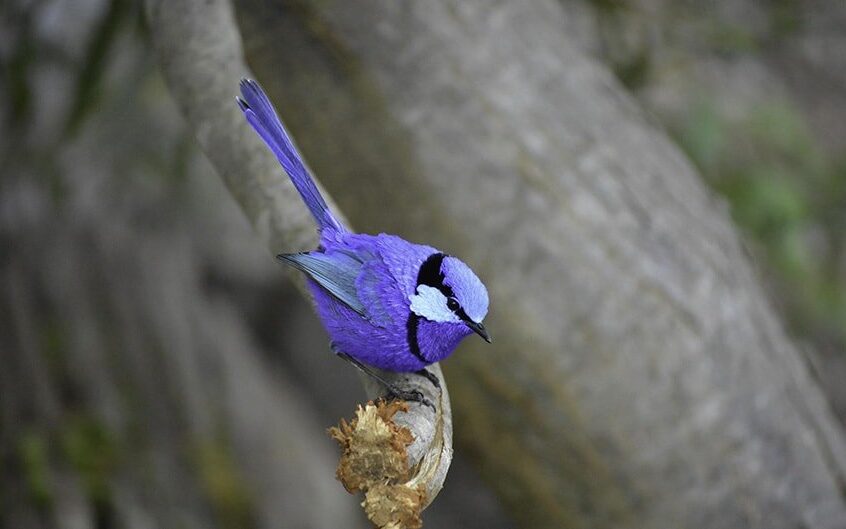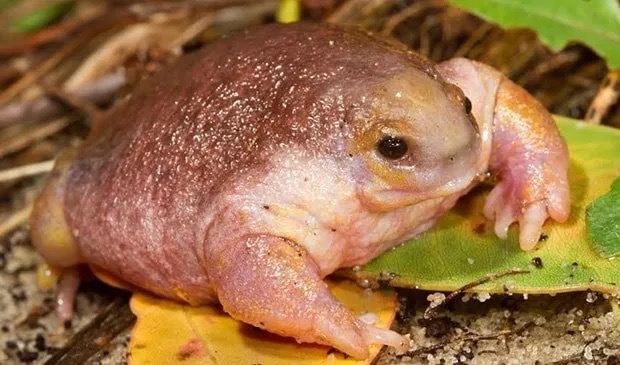Advice from the most romantic Australian animals

Each Valentine’s Day, you’re probably left unsure of how exactly you can make this year’s special day as romantic as the year before. Luckily, some of Australia’s most romantic native animals are here to help.
1. Splendid fairy-wrens

Splendid fairy-wrens like to flirt with danger when courting each other. To attract the female’s attention, males sing their sexual display songs when predators are nearby. By ‘vocal hitchhiking’ or singing their song after the call of a predator, the males take advantage of the female’s heightened attention.
Advice: Do something brave or spontaneous to impress your partner.
2. Satin bowerbirds
Male satin bowerbirds build elaborate ‘avenue bowers’, comprised of two walls of twigs leading to a display court decorated with brightly coloured objects. Males perform displays for females on the display court, and females choose the male with the best displays.
Advice: It may seem corny, but decorating your home with love tokens, like glittery hearts could be cute.
3. Turtle frogs

These frogs engage in courtship every spring, coming up to the surface to call to the females, but they won’t actually mate for another four months after that. It’s thought that this wait has to do with the frogs needing to mate in the late summer, because their eggs take around two months to develop, and their hatching has to be timed with the rains of winter so the froglets don’t dry out.
Advice: Foreplay.
4. Humpback dolphins

Only recently was it discovered that male humpback dolphins court potential females by presenting her with large marine sponges. An adult male will dive deep into the water to retrieve the sponge, then, upon surfacing the dolphin balances the sponge on his beak, eventually pushing it toward the female.
Advice: If your partner is one of those people who gush over organic cosmetics, bath bombs or weird, overly extravagant soaps, get her something locally produced that no one else will have.
5. Koalas
It’s hard to imagine, but the usually quiet, sleepy male koalas bellow out a surprisingly brutish mating call that sounds something like a wild boar. Scientists previously thought the loud grunting was limited to a single alpha male, but now it’s understood that many male koalas in a given area belt out their snarls, hoping to attract females, sometimes from long distances.
Advice: If you love them, tell them.
6. Spotted brush-tailed phascogales
While females can live up to three years of age, males live no longer than 12 months, the last few weeks of which they stop all food consumption and put all of their focus into finding females to breed with – essentially mating themselves to death. There are no survivors.
Advice: Give it your all.
7. Redback spiders
One unique feature of redbacks’ mating is “sexual cannibalism”. During mating, not only does the female eat the male, but the male actually assists her in this process by flipping his body towards her so that he is closer to her mouthparts. Because the cannibalistic process is so slow, mating continues until the male succumbs to his injuries.
Advice: Let her take the reins.
8. Peacock spiders
Peacock spiders begin by waving their legs to get the female’s attention, then follow with a dance using their third legs and opisthosomal fans. They also use rotating appendages called spinnerets (which other spider species use to spin webs) and vibrate their abdomens. The dance can last anywhere from 10 seconds to two hours.
Advice: Take your partner out to karaoke and pair a romantic tune with elaborate choreography; they’ll think you’re quirky.
9. Australian jewel beetles
Australian jewel beetles are often observed mating with beer bottles, specifically ‘stubbies’. The behaviour was explained by the beer bottles’ basic visual similarities to the large Aussie jewel beetle. Basically, the males were mistaking them for females when in flight.
Advice: No need to make Valentine’s Day a drunken affair, just take her to a nice restaurant.
10. Female fairy-wrens
Female fairy-wrens sing to communicate with other females, rather than to attract a mate. Research found that when confronted with unfamiliar female songs, females sang in reply much more frequently than males.
Advice: Who cares if you don’t have a partner on Valentine’s Day, your friends will always be there for you, to listen to you and to hold you.




